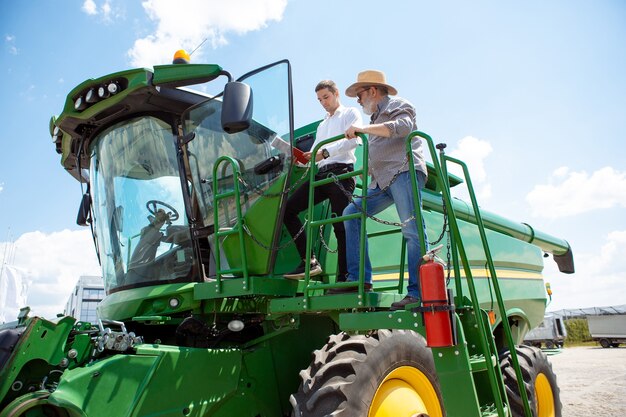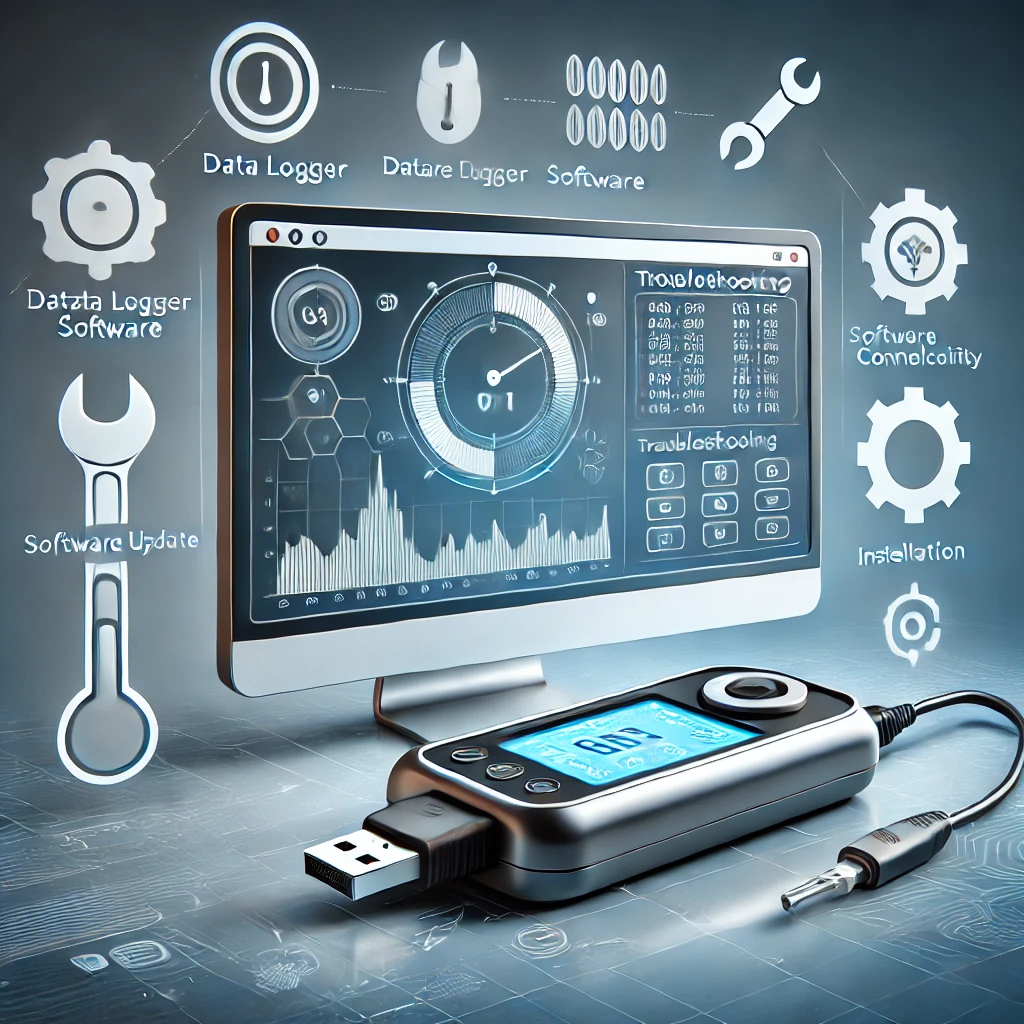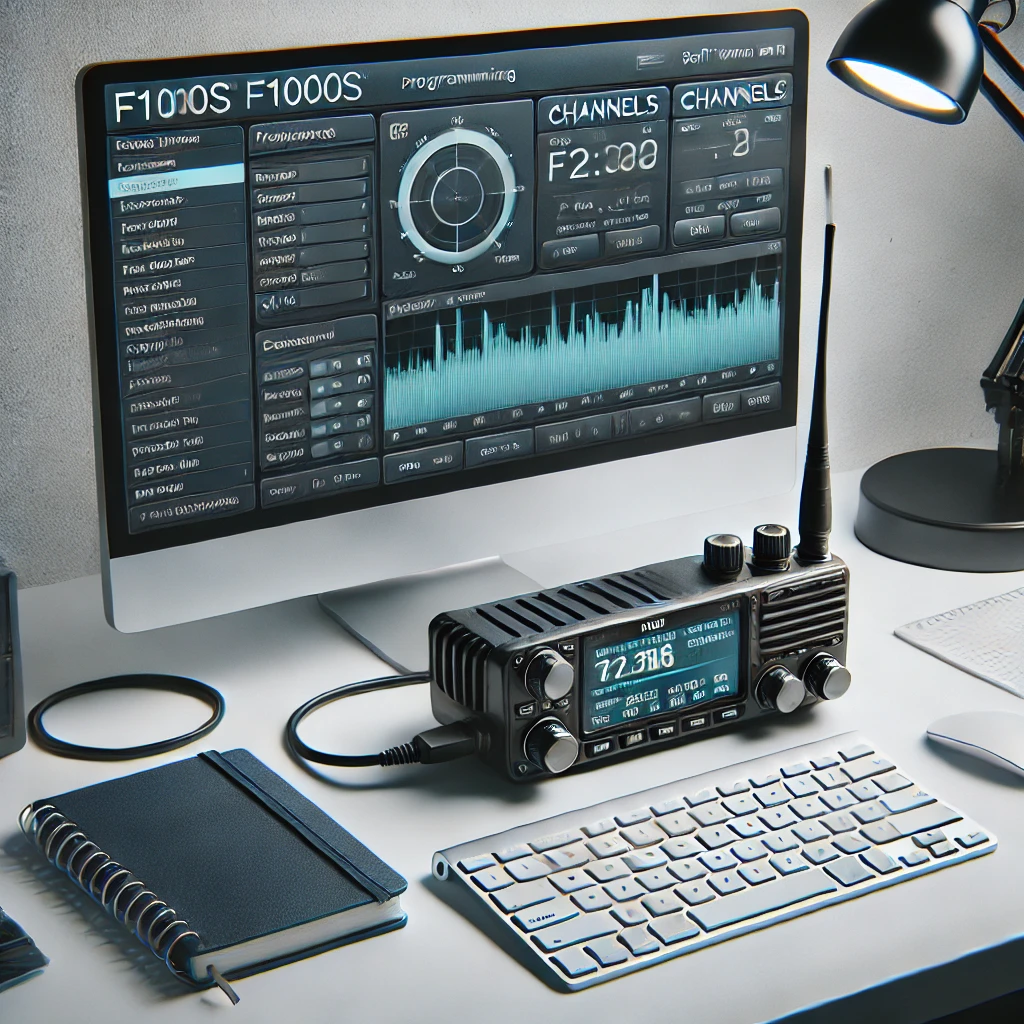John Deere, a leading name in agricultural machinery, has been known for their dependability and continuous improvement for over one hundred years. Proper care of John Deere equipment is critical to getting the most out of it economically and keeping it running for many years.
This article aims to delve into common problems faced by owners of John Deere equipment and give expert tips on how to solve them and prevent their occurrence. By learning about these matters, farmers and operators will be able to keep their equipment in perfect condition thus increasing productivity while minimizing downtime.
II. Common Problems with John Deere Equipment
A. Engine Issues
Hard Starting
One of the most commonly experienced engine problems is hard starting where the beginning is difficult. This could arise from diverse causes such as weak battery cells, clogged or malfunctioning parts, or fuel delivery challenges among others. To avoid encountering such situations, there are regular checks and maintenance that need to be done.
Overheating
Another significant problem that can cause serious damage to the engine is overheating which leads to its malfunctioning immediately. Possible causes may include reduced coolant levels, a stuck thermostat, or a defective radiator system among other factors like the one highlighted above. Regular checking as well as maintaining the cooling system is important so as not to allow overheating.
Power Loss
Losing power can be an annoying experience that may result from several factors like filters being blocked by dust or soil particles, fuel passage being interrupted, or compression failure within an internal combustion engine. Ensuring that air and fuel filters are clean and that the machine is serviced properly can be helpful towards power loss.
B. Electrical Problems
Battery Issues
In John Deere equipment battery battery-related issues are quite widespread with most arising due to loose connections, clogging up or an old cell itself. Routine cleaning on battery terminals coupled with ensuring secure connection will help mitigate these problems.
Faulty Wiring
The integrity of wiring is significant as this can cause a range of electrical problems such as starting complications or non-functional lighting systems. For maintenance of electrical integrity, wires should be inspected for any signs of wear and tear and loose connections.
Malfunctioning Sensors
Sensors play an important role in modern agricultural equipment. Malfunctioning sensors may provide wrong information leading to poor performance. These can be easily identified by using diagnostic tools thus enabling them to be replaced with new ones.
C. Hydraulic System Failures
Leaking Fluid
The performance of equipment can be considerably affected by hydraulic leaks which are quite common. Hence, identifying and fixing these leaks early enough will prevent further damage to the hydraulic system.
Slow or Unresponsive Hydraulics
Low levels of hydraulic fluid, presence of air in the hydraulic lines or parts that have worn out are some causes for slow or unresponsive hydraulics. In order to ensure that the hydraulic system is functioning properly regular checkups on fluids should be made.
Noise in the Hydraulic System
Uncommon sounds from the hydraulic system usually arise from issues like air entering into it or failing pumps inside it among others. So addressing these noises immediately after they start occurring can avoid more serious consequences later on.
D. Transmission Problems
Slipping Gears
Slipping gears could indicate worn-out transmission parts paired with inadequate transmission oil levels. Thus, keeping track and taking care of transmission units accordingly will help suppress gear slips.
Hard Shifting
Meanwhile, hard shifting often occurs due to factors such as lack of adequate fluids, contaminated oils, and used-up components among others discussed above. By maintaining clean lubricants within the gearbox one can overcome this problem too.
Transmission Noise
Abnormal noises coming from a vehicle’s drive train section might mean that its gears have been worn out while bearings could also need replacement soonest possible if such things happen noisily; hence steady checks must always be carried out for detection then treatment at that time.
E. Fuel System Issues
Clogged Filters
Clogging of fuel filters restricts the flow of fuel, thus affecting performance. Therefore, in order to maintain optimum performance within a fuel system it is important to replace the fuel filters regularly.
Fuel Contamination
Having polluted fuel can cause several problems such as engine malfunction and damage to the parts of the fuel supply. The right use of clean fuels and regular checking of fuel systems may help prevent this.
Poor Fuel Efficiency
Several causes like dirty air filters, blocked fuel injectors or improper engine setting contribute to poor fuel efficiency. Regular maintenance and tune-ups can go a long way in improving the performance of gas mileage for an automobile.
F. PTO (Power Take-Off) Problems
Engagement Issues
The problem with PTO engagement issues may be ascribed to worn clutches or linkage issues. In order to ensure smooth engagement, it is important to regularly examine and maintain your PTO system.
PTO Not Turning
One possible reason why the PTO might not turn could be a damaged PTO shaft or gearbox problems. Immediate identification and repair of these issues are critical for keeping the PTO working well.
Noise or Vibration
Abnormal sounds from power take-off systems may indicate misalignments or worn-out parts among other things. Continuous inspections aid in early detection hence prevention at all times against such cases.
III. Diagnostic Tips for John Deere Equipment
A. Identifying Symptoms
Early identification of symptoms is critical to diagnosing and fixing problems associated with John Deere equipment in time: unfamiliar noises should be listened; any changes in the work have been observed; warning lights and error codes should be taken note of due to their significance in this process; some common symptoms include:
Engine misfiring, rough idling, or hard starting.
Unusual noise/vibration coming from engine/transmission/hydraulic system.
Loss of power/efficiency during operation.
Fluid leakages including oil, coolant, hydraulic fluid, etc.
Electrical faults like dimming lights or unresponsive controls.
B. Using Diagnostic Tools
Application of appropriate diagnostic tools greatly expedites troubleshooting processes involved in repair procedures. In this regard, John Deere provides a wide range of advanced diagnostic tools and software that are specifically designed to facilitate seamless identification and resolution of issues:
John Deere Service Advisor is an all-in-one diagnostic tool that gives detailed error codes, troubleshooting steps, as well as repair guidance. It directly connects with the machine’s onboard computer allowing the technicians to identify and fix problems sooner.
Onboard Diagnostics: Modern John Deere equipment comes installed with onboard diagnostic systems that offer real-time data and error codes. Understanding these systems and how to interpret their data will greatly assist in solving them.
Multimeter: A multimeter is essential for diagnosing electrical problems. Such things as battery voltage, wire continuity or sensor/switch functionality can be examined using it.
C. Checking Maintenance Records
Keeping proper records on maintenance or repair done on your John Deere equipment is very important. These records provide useful information about the history of the machine that may help you diagnose current faults’. This requires the following considerations when checking maintenance records:
Frequency of Maintenance: Many common problems can be prevented through regular maintenance. Check whether or not the equipment has been serviced according to schedule.
Previous Repairs: Past repairs should be reviewed to establish if certain issues are recurrent and if any previous remedies have resolved the underlying cause.
Parts Replacement History: Knowing which parts have been replaced when helps in finding out what might be wrong now with them; new issues are hardly ever associated with recently replaced parts.
Usage Patterns: Information about machine usage including its use context can indicate where a problem could have arisen from. For instance, more frequent wear and tear may result from heavy usage under unfavorable weather conditions like extreme coldness or heat waves.
To maintain John Deere equipment in good working condition and correct any issues that may arise, it is necessary to update and review maintenance records regularly. This is along with using diagnostic tools effectively, and keenly observing symptoms.
IV. Step-by-Step Solutions
A. Engine Problems
How can I Correct Hard Starting?
Battery Check: Be sure the battery is fully charged and has clean tight connections; replace old or failing batteries.
Examine Spark Plugs: Detach spark plugs for inspection of their wear and sediments; wash or substitute if need be.
Fuel Injection Problem: Inspect the fuel pump as well as the fuel filter; if clogged replace the filter but ensure that the pump retains its normal functions.
Air Inlet Ducts: Clean or renew the air filter if necessary.
Steps on Fixing Overheating
Keep Coolant at Desired Levels: Look out for leakage in the coolant system by checking on coolant levels annually.
Radiator Clogs And Damage: Clean up the radiator fins so that restricted airflow does not lead to overheating.
Thermostat Testing: Change thermostat as required if it fails to open or close properly (mcgrawhillconstruction 19).
Water Pump Wear Or Failure Detection: Replace the water pump once it shows signs of wear out or failure (mcgrawhillconstruction 21).
Remedies for Power Loss
Check your Air Filters Regularly: If you find them dirty, change your air filters immediately.
Proper Fuel Flow Technique Calls For a Replacing of a Fuel Filter:
Undertake A Compression Test To Ascertain Whether The Engine Has Worn Out Or Is Damaged,
Injector Cleaning Ensures The Delivery Of Fuel Efficiently
B. Electrical Problems
Battery Maintenance including Replacement
Inspection of Terminals: Clean the terminals of the battery making sure they are held very tightly.
Charge Level Examination of Battery Capacity Should Be Done Regularly: Recharge an almost depleted battery. Substituting for old cells is also an option.
Corrosion Prevention: Use a battery terminal protectant that stops battery corrosion in the future.
Fixing Faulty Wiring
A visual inspection of all wires: The mechanic should check for any worn-out or damaged wires in the system.
Tightly Secure Electrical Connections: Make sure all electrical connections are tight and secure (mcgrawhillconstruction 58).
Substitute Damaged Wires with Suitable Gauge Wire Where Applicable:
Replacing Malfunctioning Sensors
Diagnostic Tool Usage: To identify the malfunctioning sensors, use a diagnostic tool.
Identify and Replace: Replace the bad sensor with another sensor from the same product line using the diagnostic code reading your scanner has given you (mcgrawhillconstruction 61).
C. Hydraulic System Failures
Repairing Leaks
Leaky Area Identification Which Would Be Done By Checking Hydraulic Lines, Fittings, And Seals:
In case of leaks replace seal rings as well as glands that are either worn-out or defective (mcgrawhillconstruction 69).
Ensure that All Hoses Remain Tightly Connected while Performing Any Work on Hydraulics:
Improving Hydraulic Response
Keep Fluid to Recommended Level: Check and fill up hydraulic fluid to the appropriate level.
Eliminating Air In Hydraulic System Bleeding The air out of your hydraulic system ensures there is a smooth flow of fluids through it.
Change Filter if It Is Dirty: If your hydraulic filter becomes dirty it’s important to change it immediately (mcgrawhillconstruction 74).
Removing Hydraulic Noise
Fluid Inspection- A careful review of hydraulic fluid will help determine if it is at the right level and type recommended for use (mcgrawhillconstruction 77).
Inspect the clutch and change it if necessary as there is wear.
Adjust the transmission linkage to get a smoother change of gears.
Muffling Engine Noise When Driving
Ensure that the level of fluid is up to the right mark and that it is the right type of fluid for your transmission.
Look at transmission bearings for damage and replace them if necessary.
Investigate gears for any damage and replace them where appropriate.
E. Fuel System problems
Clean or Replace Filters
Find Filter: Find out where your fuel filter is located, then take it off from its position.
See if it has dirt or debris: Take a look at filter dirtiness; wash/replace the part wherever applicable.
Install: After cleaning or getting another one, secure it properly in place again to avoid leaking air during use.
Preventing Fuel Pollution
Use Uncontaminated Fuel: Always employ clean, quality fuel sources only.
Examine Fuel Caps: See that caps are firm enough not to allow contaminants in!
Water Removal: Check frequently within this part of the engine for water content issues, draining when required.
Increasing Gas Mileage
Have Regular Maintenance Performed on the Fuel System Such As Changing Filters And Cleaning Injectors:
Properly Tune Engine – Ensure the engine runs smoothly as per manufacturers’ specifications thus enhancing power output
Monitor Usage – Keep track of fuel consumption rates by watching how much you use daily; sudden decreases might signal inefficiency thus prompting investigation by an expert mechanic to identify potential causes before doing anything about them ASAP!
F. PTO Failures
Ensuring Engagement Is Right Then Clutch Needs Testing For Wear And Any Necessary Adjustment Or Replacement Done:
Linkage Adjustment To Get The Best Result In Speedy Functioning Of PTO Clutch:
Keep All Moving Parts Lubricated:
Fix PTO Rotation Problems
The Shaft must be inspected to determine whether it has been damaged or worn out and thus replaced accordingly;
Gearbox Check For PTO Problems – Check the PTO gearbox for malfunctions and fix any faulty parts or replace them altogether:
Ensure It Is Aligned: Make sure that the shaft is in line with what it should be connected to;
Noise And Vibration Reduction
Inspect Bearings To See Whether They Need Replacing:
Lubrication Of All The PTO Parts:
Examine Mounts To Establish Their Sturdiness That Would Minimize Vibrations.
V. Preventive Maintenance Tips
A. Regular Inspections
Regular inspections are needed to keep John Deere equipment in the best possible condition:
Check daily for signs of leakage, and unusual noises and measure fluid levels.
Periodic surveys need to be carried out every other week or month, while filters, belts, hydraulic systems, etc. are being checked.
Maintenance must be comprehensive at the end of each season and include all maintenance checks necessary for storage and prolongation of service life.
B. Scheduled Servicing
Following a scheduled servicing regimen ensures longevity and reliability:
Follow John Deere’s recommendations as outlined in their maintenance schedule on when to do an oil change, filter replacement, or watch out for fluids running low.
Timing: Schedule major servicing during off-peak seasons to minimize downtime.
Keep A Record Of Maintenance Activities: Keep proper records that will help trace equipment history and indicate recurring faults if there are any.
C. Proper Storage Practices
Proper storage practices help protect equipment during periods of non-use:
Thoroughly clean out your equipment so that dirt does not remain inside it causing rusting to occur over time.
Gasoline Stabilization – Pour fuel stabilizer into the tank then run your machine until stabilized fuel reaches the engine assembly through hoses;
Store machines indoors in dry places where rain can’t reach them and the sun can’t damage them too.
VI. When to Seek Professional Help
Online Help and Manuals for John Deere
Take advantage of the official platforms for John Deere technical support where you can also get comprehensive guidelines.
There are manuals concerning troubleshooting, maintenance, and parts listings.
Internet Discussion Boards and Associations
You should join online platforms that are lively as they offer help to owners of John Deere machines.
Discussing problems, sharing experiences or looking for advice among colleagues and specialists is possible here.
Where to Get Tools and Spare Parts
There are reputable firms that have specialized in providing tools as well as replacement components plus other products for John Deere machinery.
For ease of procuring any necessary items, either curbside links or contact details have been provided.
FAQs
Are John Deere engines reliable?
They are well known all over the globe for their robustness, fuel efficiency as well as performance thus making them popular with the farmers and industrialists across continents.
John Deere: What Are 5 Interesting Facts You Can Share About It?
Having been established in 1837, this trademark has already gained a colossal popularity due to its green-yellow machinery, innovative ideas in agriculture business’ development around the globe including numerous farming communities’ welfare schemes it has initiated.
Would you recommend buying a John Deere tractor?
John Deeres are versatile tractors that are built by using modern technology guaranteeing durability while maintaining their dealerships worldwide so that they could provide assistance if required hence nowadays farmers prefer them to manure spreaders especially those who spend considerable sums on purchasing a new machine like this one every two years.
What’s better between Massey Ferguson & John Deere?
The choice between a Massey Fergusson or a John Deer depends on personal preference. While ‘Deer offers hi-tech solutions with global customer support network’, Fergusson’s priority in making agricultural machines is a value-for-money economy combined with durability and practicality.
What should I do in case my John Deere machine is difficult to start?
Inspect the fuel quality and filters. Ensure that your battery is fully charged and all connections are clean. In case the problem persists, check the engine manual for particular ways of troubleshooting.
Where can I find spare parts for John Deere equipment?
Original replacement components can be purchased from authorized sales outlets of this company. There are also web-based stores as well as local sellers with huge assortment of items suitable for these machines.











Leave a Reply